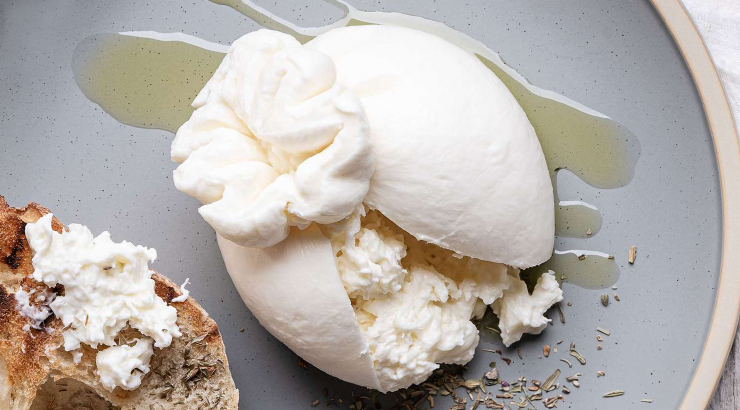Burrata is a luxurious Italian cheese made from cow’s milk, originating in the Apulia (Puglia) region in the early 20th century. Invented by Lorenzo Bianchino in the town of Andria, it was originally a way to use up leftover scraps of mozzarella and cream. The name “burrata” means “buttered” in Italian—apt for its soft, creamy texture.

At first glance, burrata looks like a ball of fresh mozzarella, but its magic lies inside. Once cut, it reveals a luscious center of stracciatella (shredded mozzarella) mixed with cream. The outer shell is firm mozzarella; the inside is rich, delicate, and almost buttery in consistency.

Burrata has a mild, milky flavor with a hint of sweetness. Its creaminess makes it ideal for pairing with both simple and bold ingredients. Serve it with ripe tomatoes, fresh basil, olive oil, and crusty bread for a classic Italian starter. It also complements roasted vegetables, prosciutto, peaches, figs, or arugula. Add it to warm pasta or risotto just before serving to create an instant creamy sauce.
For wine pairings, burrata works beautifully with crisp whites like Vermentino, Pinot Grigio, or Sauvignon Blanc. A dry rosé or sparkling wine like Franciacorta also balances its richness. If you prefer reds, go for something light and juicy, like a young Chianti or Barbera.

Diet-wise, burrata is indulgent. While it contains protein and calcium, it’s high in saturated fat and calories—typically around 300–400 calories per 100 grams. It’s best enjoyed in moderation, especially if you’re watching your fat intake.


